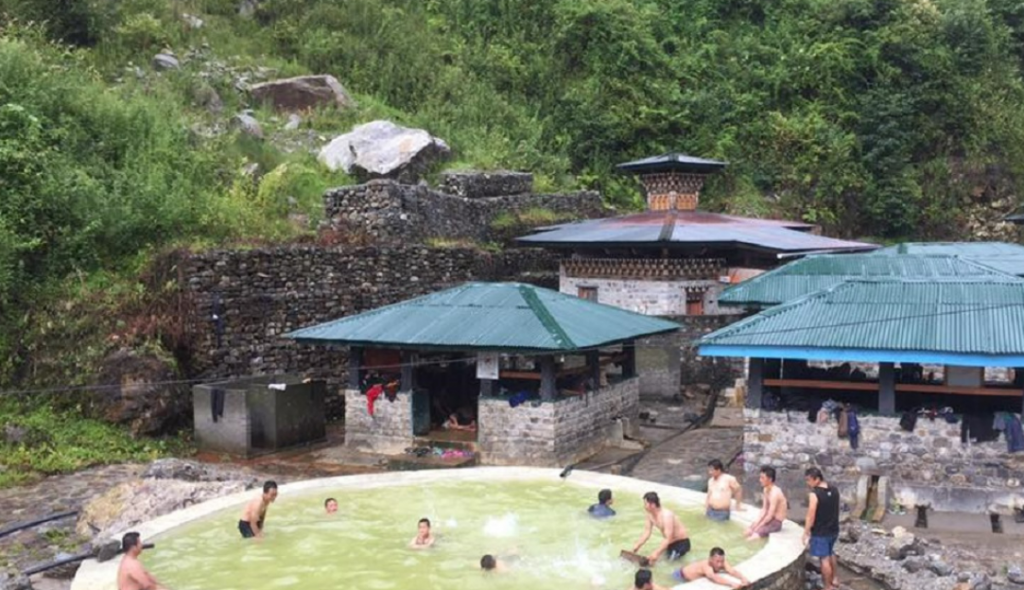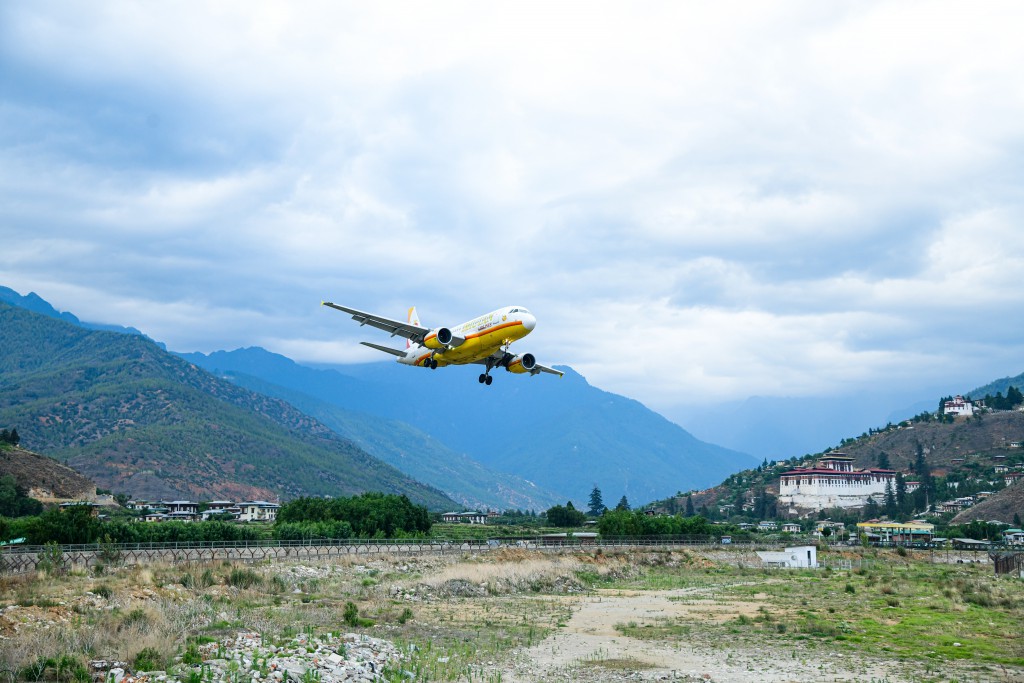Introduction
Embark on a 22-day journey that will lead you through some of Bhutan’s most awe-inspiring landscapes on the Laya/Gasa Trek. Starting in the picturesque Paro Valley, you’ll explore historic fortresses and sacred monasteries before venturing into the rugged wilderness. As you trek into the remote Himalayan region, you’ll witness breathtaking scenery, including towering peaks, lush valleys, and pristine rivers. Encounter the unique culture of the Laya people, known for their distinctive dress and traditions, and learn about the rich heritage of Bhutan. The trek offers a chance to rejuvenate in natural hot springs and experience the tranquility of Bhutan’s remote villages. Finally, your journey concludes with a visit to the iconic Taktsang Monastery, perched on a cliffside, before departing from Paro Airport. This trek is an incredible adventure for those seeking both natural beauty and cultural immersion in the Land of the Thunder Dragon.
Day 01: Arrive Paro by Druk Air

Day 02: Paro Sightseeing

Morning : Visit Drugyal Dzong (a ruined fortress – 16 Kms. away from Paro town).
Although in ruins, this Dzong is of great historical importance. It was here that the Bhutanese finally defeated the invading Tibetans and drove them back. From here, the peak of Chomolhari “Mountain of the goddess” can be seen on a clear day Alt. 7,329m/24,029ft.). On the way back you visit a typical Bhutanese farmhouse.
Visit the Rinchen Pong Dzong. This massive fortress is located on a small hill just above the Paro river (Pachu) in the Paro valley. You have to walk about 15 minutes by crossing an ancient wooden bridge built in typical Bhutanese architect. The Dzong houses the District Administration office and the District Monk Body. It was built in 1645 AD.
Lunch in the Hotel.
After lunch, visit the National Museum (Ta-Dzong). This was actually the Watch Tower of the Paro Rinchen Pong Dzong. It was converted to the National Museum in 1968.
Visit Kyichu Lhakhang ( Lhakhang means Monastery ). Kyichu Lhakhang was built in 659 AD by the King Songtsen Gampo of Tibet as one of the 108 such Monasteries which he built in various places to spread Buddhism. It is located between Paro Town and Drugyal Dzong. It is one of the holiest places in Bhutan as it marks the advent of Buddhism in the country.
Evening: Reception by our tour operator with cultural show.
Day 03: Trek begins: Paro – Shana

Drive up to Drugyal Dzong where the road ends and start the trek by following the river gently uphill through a narrowing valley of paddy fields. You will find plenty of traditional farm houses in a purely rural setting. The camp site is just beyond an army outpost. Alt. 2800m, Distance – 17 km and time 5-6 Hr.
Day 04: Shana – Soe Thangthangkha

Continue uphill through the river valley which narrows and closes in after some distance. The trail then winds up and down along the drainage. Most of the trail actually is down hill after the initial climb. The camp site is located in a meadow with stone shelter. Alt. Approx. 3400m, distance 15 km, time 4-5 Hr.
Day 05: Soe Thangthangkha – Jangothang

Walk up along the Pachu (Paro river), pass a small army outpost where the valley begins to widen again. You can now clearly view the high ridges and the snow capped mountains all around and also see the yaks and the yak herders winter homes. Camp beneath a ruined fortress at the base of the Jomulhari mountain. Alt. 4040m. , Distance 19 km and time 5-6 Hr.
Day 06: Jangothang – Lingshi

Walk up toward the pass through a wide pasture land. Depending on the season you are there, you might find some yak herders in their camping tents along the way. As you come down after the pass to the Lingshi basin, you will see some beautiful views of the Lingshi Dzong and the valley and also Tserim Kang (mountain) and its descending glaciers at the north end of the valley. Camp in a stone shelter with a built-in fire pit or in the tent. Alt. 4150m. Distance 19 km. Time 5-6 Hr.
Day 07: Lingshi – Chebisa

Today is the shortest walking day and you can really take it easy. On reaching the camp site at Chebisa, you can visit the village houses if you feel up to it. Alt. 3850m. Distance 12 km. Time 3-4 Hr.
Day 08: Chebisa – Shomuthang

You walk through a wide pasture land towards Gobu-la ( pass). On the way, you will see few people herding the yaks. After crossing the Gobu -la ( Alt. 4350m ) descend down to the valley. The camp site is on a bench above a river which is a tributary of the Nochu river. Alt. 4260. Distance 17 km. Time 5-6 Hr.
Day 09:Shomuthang – Robluthang

As the walk is little strenuous, it is advisable to start a little early. After crossing the Jerela (pass) Alt. 4600m you come down to Tsharijathang valley where you can normally see herds of Tarkins.
Camp at Tsharijathang. Alt.4390m. Distance 15 km. Time 6-7 Hr.
Day 10: Robluthang – Lemithang

After crossing the Shingela pass, alt. 4900m., you come down and follow the valley. Lemithang is under the Laya District and you will see people dressed in typical Laya costume with long pointed bamboo hats on their head. Camp at Lemithang. Alt. 4140m. Distance 19 km. Time 6-7 Hr. If you have time, it would be advisable to spend a day here exploring the valley and meeting the people who have a different and unique culture.
Day 11: Lemithang – Laya

Today, you walk all the way downhill along a narrow winding river valley. The trail leads you to the west side of Laya village. Camp site is on a high flat bench above the Laya village. Alt. 3850m. Distance 10 km. Time 3-4 Hr.
Day 12:Laya
Halt in Laya for rest and to explore the Laya village.
Day 13: Laya – Koena

The trail winds up and down along the river valley avoiding natural obstacles and affording breath-taking views of the crashing river, feeder streams and water falls. Camp. Alt. 3800m. Distance 19 km. Time 6-7 Hr.
Day 14: Koena – Gasa

You cross the Babela pass, Alt.3740m., after which the trail is all the way down till you reach the camp site which is close to Gasa Dzong. Alt. 2900m. Distance 17 km. Time 6-7 Hr.
Day 15: Gasa – Gasa Tsachu (hot spring)

After a late breakfast, trek to Gasa Tsachu. After lunch relax in the hot spring. The Gasa Tsachu is one of the most popular hot springs in Bhutan.
Camp at Gasa Tsachu.
Day 16: Gasa Tsachu – Geon Damji

After a short climb, the trail winds through the rolling hills and passes through the pine and oak forests, villages and wheat fields. You will also see a beautiful view of the Gasa Dzong glued to the valley wall seeming to float in space. Camp. Alt. 2280m. Distance 21 km. Time 6-7 Hr.
Day 17: Geon Damji – Tashithang

The trail descends from the high agricultural benches above the Mochu ( Chu means River ) into a lush semi-tropical gorge filled with banana trees, creepers and various tropical vegetation. You will also see monkeys and few other animals occasionally. Camp at Tashithang. Alt. 1700m. Distance 17 km. Time 6-7 Hr.
Day 18: Tashithang – Khuruthang

After a short walk to the motor road, drive down to Punakha valley. Stop at Punakha and visit the Punakha Dzong. Punakha was the former capital of Bhutan. The Dzong lies between two rivers known as Phochu and Mochu which means ” Male River and Female River “. It was built by Shabdrung Ngawang Namgyel the founder of Bhutan in 1637 AD and is one of the most important and historical Dzongs in Bhutan. In the Dzong are kept the sacred remains of Pema Lingpa and Shabdrung Ngawang Namgyel. The Dzong now houses the District Administration office and the winter residence of the state Monastic Body and its Chief Abbot. Lunch in Punakha. After lunch, drive to Thimphu . 77 km. Time approx. 3 Hr. Overnight in Hotel.
Day 19: Sight seeing in Thimphu

Visit the Memorial Chorten ( a huge stupa ) built in memory of the third king of Bhutan who reigned the Kingdom from 1952-1972.
Visit the National Library where ancient manuscripts are preserved.
Visit the Wood Craft and Painting school where traditional arts and crafts are still kept alive. Visit the Handicrafts Emporium where Bhutanese textiles and other arts and crafts are displayed and can be purchased.
Visit Simtokha Dzong. This is one of the oldest fortresses in Bhutan. It was built in 1629 AD. It houses the largest monastic schools in the country.
Visit Tashichho Dzong, the main secretariat building. This massive structure houses part of the government Ministries, the office of the King and the Throne Room. It also houses the State Monastic Body and the living quarters of the Chief Abbot and the Senior monks.
Overnight in Hotel in Thimphu.
Evening: Relax in Thimpu’s modern health club and beauty parlor “Sakten Health Club and Salon” where sauna, steam, gym (with modern equipment), beauty treatment including hair dressing, skin care (with pure herbal products) and body massage are available. For our guests, the Sakten Health Club facilities are FREE.
Day 20: Dechencholing

Drive to Dechencholing 6 km from Thimphu town to view the Queen Mother’s Palace from the outside. You can take pictures of the Palace and the Dechencholing Monastery from the outside only.
Drive back to Thimphu and take a leisurely stroll in the market.
After lunch, drive to Paro. 65 km. Time 2 Hr drive. Overnight in Hotel.
Day 21: Satsam Chorten

Drive up to Satsam Chorten ( 10 km from Paro town ) and from there walk up to Taktsang Monastery. The name Taktsang means ” Tiger’s Nest “. The Monastery is perched on a rocky ledge with a sheer drop of nearly 4000 ft. and overlooks the Paro valley and the river. It is said that in the second half of the 8th century, Guru Padma Sambhava known as the second Buddha in Bhutan, meditated in the spot where the Monastery is situated having alighted there on the back of a flying tigress.
Picnic lunch at the Taktsang cafeteria. The round trip hike takes about 4 Hr.
Day 22: Drive to Paro Airport.

Be seen off by a representative of our tour operator or your guide.
